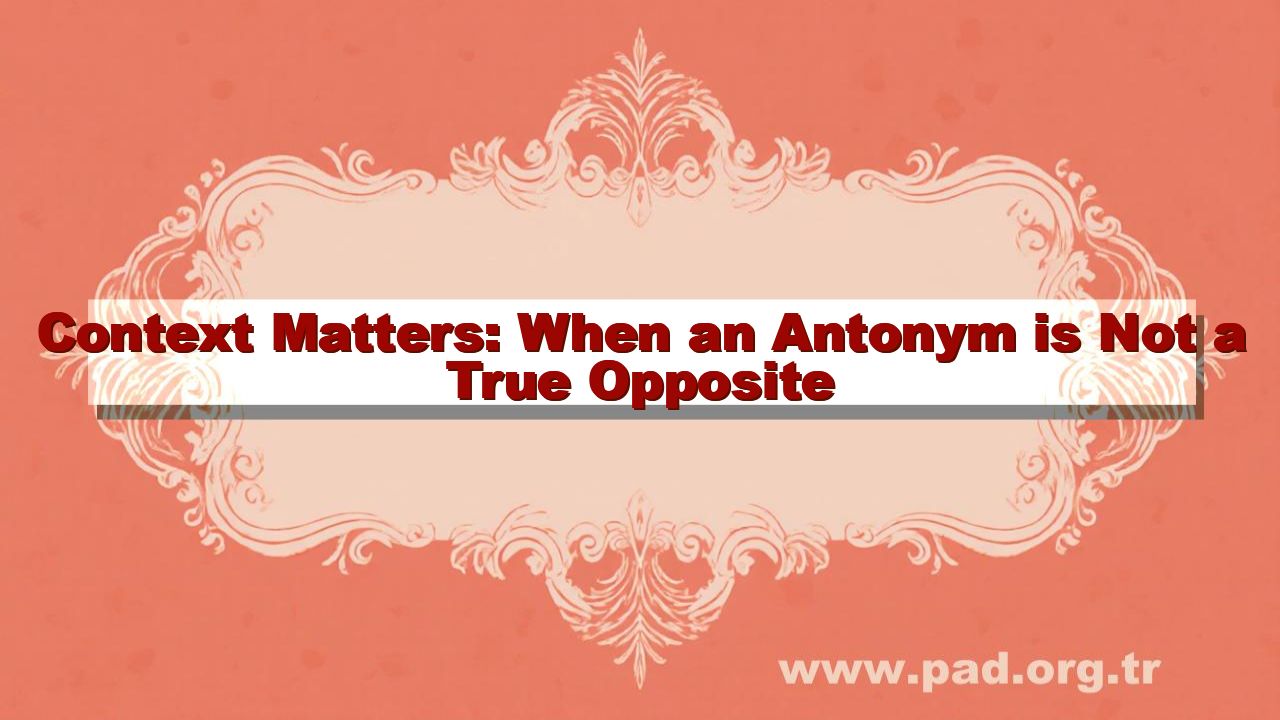I learned this lesson the hard way trying to translate a technical manual. I had to translate the word ‘light.’ I confidently wrote the opposite as ‘heavy’ because I was thinking about weight. My client laughed! In the context of the diagram, ‘light’ referred to color (a pale shade), and its opposite should have been ‘dark’ or ‘deep.’ That really hammered home the fact that the word itself doesn’t carry an inherent opposite; if the usage changes, the antonym shifts entirely. You need to be aware of polysemy—when one word has multiple meanings—to choose the right contrast.
The Shifting Sands of Polysemy and Antonyms
Polysemy is your main culprit here. It means a single word, like ‘fast,’ has several distinct meanings. Because the meaning shifts, the appropriate antonym has to shift with it. You simply cannot use the same opposite for every instance of a polysemous word.
Case Study 1: The Word “Fast”
Consider the word ‘fast.’ Its antonym depends entirely on the sentence:
- Meaning 1 (Speed): “He drives a fast car.” The antonym is slow.
- Meaning 2 (Secure/Fixed): “The knot was tied fast.” The antonym is loose or unsecured.
- Meaning 3 (Absence of Food): “The religious leader held a fast.” The antonym here is practically nonexistent, perhaps a phrase like gorging or feasting, which shows a complete action-based contrast rather than a single word.
Due to the fact that the semantic field of ‘fast’ covers speed, security, and abstinence, any single antonym like ‘slow’ would only be correct in one-third of the cases. This proves that you must first identify the precise meaning being used.
Case Study 2: The Word “High”
The word ‘high’ is another great example where context is king:
- Meaning 1 (Altitude): A high mountain. The antonym is low.
- Meaning 2 (Sound Pitch): A high tone. The antonym is deep or low.
- Meaning 3 (Price/Cost): A high price. The antonym is cheap or low.
- Meaning 4 (Emotional State): Feeling high on life. The antonym is depressed or low.
A truly complex sentence that shows this contrast perfectly: When you choose the antonym for a word, you must consider not only its literal meaning, such as the opposite of a high shelf being a low shelf, but also its abstract function, recognizing that the antonym of a high interest rate is actually a cheap or affordable one, a subtle but critical distinction that demonstrates true fluency.
Relational and Complementary Antonyms and the Context Trap
The issue of context is particularly tricky with relational and complementary antonyms because their relationship is often exclusive, but only within a set boundary. Relational antonyms (like parent/child or buy/sell) define a specific relationship. If you change the relationship, the opposite word is useless. The opposite of ‘give’ when talking about charity might be ‘receive,’ but the opposite of ‘give’ when talking about surrender is ‘resist’ or ‘fight.’ The context of the action is everything.
Complementary antonyms (like on/off or dead/alive) are absolutes, but even they can have contextual nuances. Is the opposite of ‘innocent’ always ‘guilty’? Not necessarily. In a moral context, the opposite of ‘innocent’ might be ‘corrupted’ or ‘depraved.’ In a legal context, it is strictly ‘guilty.’ The legal system creates a rigid boundary, but outside that boundary, the opposition becomes much more subjective.
Keeping Current: Contextual Antonyms in 2025
The vocabulary of 2025 is creating new context-specific antonyms, especially in the tech and digital spheres. The meaning of ‘authentic,’ for example, is constantly being challenged. Its opposite used to be simple: ‘fake’ or ‘false.’ Today, in digital content creation, the opposite of an Authentic human-created image isn’t just a ‘fake’ one; it’s an AI-Generated one. The word ‘AI-Generated’ has become the specific, contextually relevant antonym for ‘authentic’ in visual media. This is key for understanding modern semantic shifts.
- Old Contrast: Natural vs. Artificial
- 2025 Contrast: Natural (Human-Curated) vs. Algorithmic (AI-Driven)
This weekly update for October 25, 2025, shows that for high-impact communication, you need to discard generic opposites and use the specific, currently relevant term that defines the contrast in that particular cultural or technical context.
FAQ Schema: Antonyms and Context
What is the biggest mistake people make when choosing an antonym?
The biggest mistake is ignoring polysemy. People assume a word has only one meaning and one opposite. They see ‘dry’ and immediately think ‘wet’ (opposite state), forgetting that the opposite of ‘dry’ humor (meaning subtle/wit) is ‘obvious’ or ‘crude’ humor (opposite style). Always check the specific definition of the word used in the sentence before picking its opposite.
How does the context change the antonym for ‘red’?
In art or light theory, ‘red’ has a clear opposite, often a complementary color like green or cyan. But in a social context, the opposite of ‘red’ (meaning danger or alert) could be green (meaning safety or go). If ‘red’ means communist, its opposite is blue (meaning conservative). The antonym for a color is rarely absolute and relies entirely on the established system you’re referencing.
Why are relational antonyms tricky regarding context?
Relational antonyms define a role within a relationship. For example, the opposite of doctor is patient. This only works if the context is about treatment. If the context is about paying salaries, the opposite of a ‘doctor’ (as an employee) might be ‘CEO’ (as an employer). If you change the relational context, you change the required opposite word to maintain the balance of the relationship.

